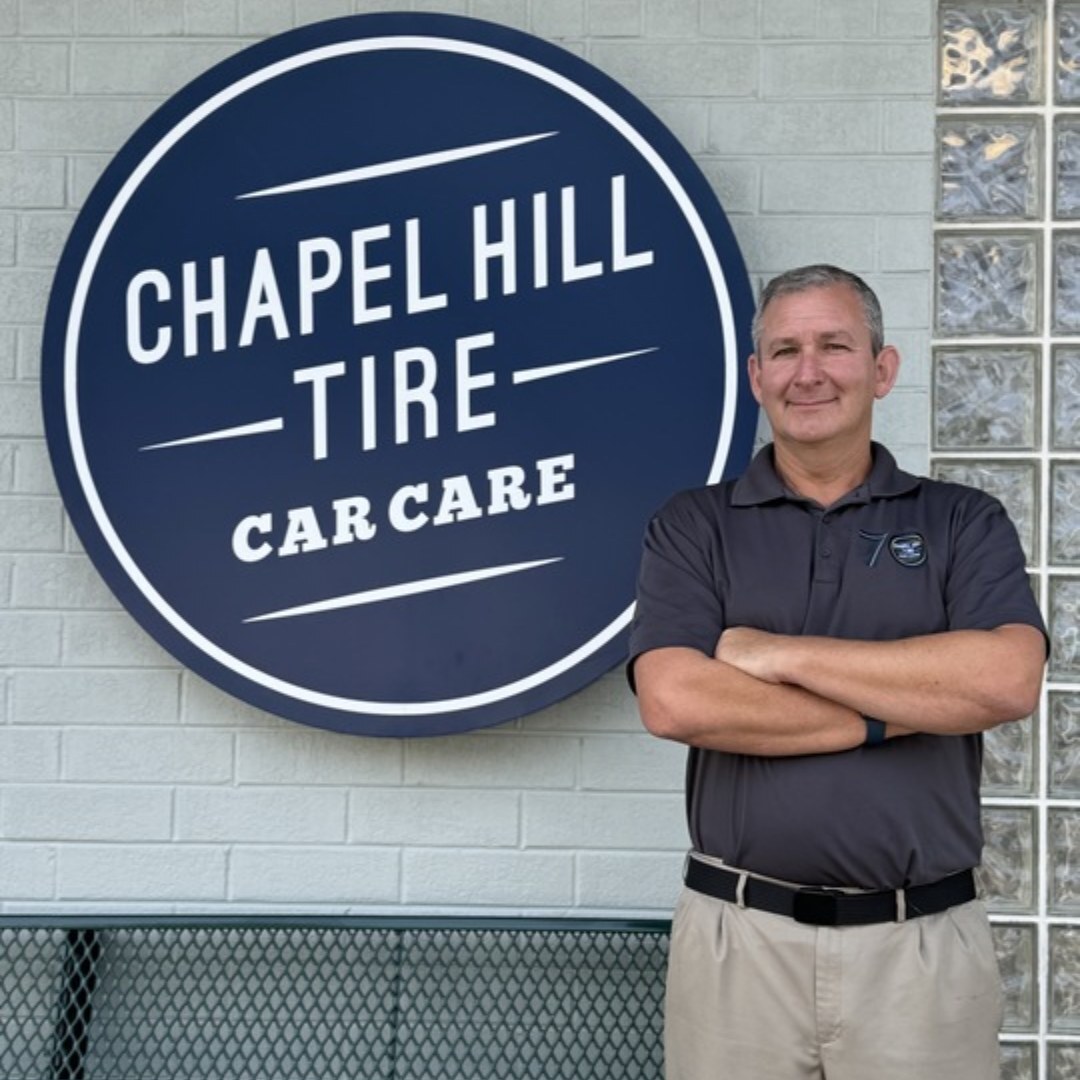If you keep getting flat tires, you’ll want to solve the issue as soon as possible. Besides throwing a wrench in your plans for the day, flat tires can impact your vehicle’s handling and make it more likely you get into an accident. Driving on a flat tire can also cause further damage to the tire and bend or warp your rims.
As you try to avoid flat tires in the future, take a moment to learn more about the main reasons why flat tires occur.
Why Do I Keep Getting Flat Tires? 5 Reasons for Flat Tires
From punctures and faulty valve stems to dry rot and aging, there are several common causes of flat tires. If your tire went flat for no reason you can think of, review the five most common causes of flat tires below:
1. Punctured Tires
The most obvious cause of a flat tire is a puncture. If you can see a nail or other object sticking into your tire, it needs to be repaired, or your tire will keep losing pressure. Usually, a punctured tire is pretty easy to spot, and if you do notice a puncture, you shouldn’t drive until you can have the tire repaired or replaced. Before you drive to a mechanic, make sure to swap out your punctured tire with a spare.
A mechanic can repair your tire if the puncture is 1/2 an inch away or more from the edge from the edge of the tire tread. However, punctures that are closer to the edge aren’t repairable, and the tire will need to be replaced. While you can’t always stop punctures from occurring, they’re more likely if you drive over potholes, on a road’s shoulder, or in areas without properly paved roads.
2. Old Tire Age
Over time, the rubber in a tire will degrade, even if you keep your tires in great condition. If your tire went flat for no reason and continues to go flat despite nothing looking wrong, chances are your tires have aged past the point of repair. The rubber degradation will cause your tires to crack and lose pressure, leading to constant flats. Since these cracks can be hard to spot, you’ll often need a professional to check if degraded rubber is at fault.
At maximum, a tire might make it to 10 years old, but most tires need to be replaced after the five-year mark. When your tires are old and you keep getting flats, you’ll likely need to replace your tires with a new set.
3. Faulty Tire Pressure Monitoring System
Your vehicle’s tire pressure monitoring system (TPMS) monitors tire pressure and should alert you if the pressure is too low via a light on your dashboard. However, a faulty or damaged TMPS may not detect low pressure in your tires, causing you to drive on tires despite them not having enough pressure. Driving on tires without enough pressure can damage rims and sidewalls, reduce your vehicle’s handling, hurt your gas mileage, and cause your tire tread to wear down faster.
If your tire is flat but your TMPS isn’t alerting you to it, you can be fairly certain the TPMS needs to be fixed. You might also manually check your tire pressure with a pressure gauge if you suspect your TPMS is inaccurate. Since fixing a TPMS isn’t very DIY friendly, you’ll want to bring your car into a repair shop for help.
4. Dry Rot
Dry occurs when a tire is exposed to unfavorable conditions for too long, such as extreme temperatures, too much direct sunlight, or being parked in one place for too long. Low tire pressure and exposure to harmful chemicals can also cause dry rot. If your tire is affected by dry rot, the rubber will be more brittle, causing cracks and even damage to your sidewall.
Since dry rot isn’t repairable, you’ll need to have a mechanic replace your tires if they find that dry rot is affecting your tire. If you want to prevent dry rot from causing a flat, try to avoid the main causes of dry rot described above.
5. Damaged Valve Stem
A tire’s valve stem helps to regulate air pressure, with the core of the stem allowing air to pass in and out while the stem’s cap stops debris from getting in the core. Damage to your valve stem can occur for multiple reasons, such as road salt, age, moisture, UV rays, and heat. When the issue isn’t fixed, your tire will leak and constantly lose pressure, leading to a flat tire.
If a valve stem breaks, it’ll need to be replaced. A mechanic should be able to perform the replacement fairly quickly, solving the leak and any tire pressure issues caused by it.
Choose Chapel Hill Tire for Flat Tire Repair and Replacement Services in Raleigh
When you’re looking for tire repair services in Durham, Raleigh, Chapel Hill, or the surrounding NC Triangle, Chapel Hill Tire has you covered. Our team regularly inspects and repairs flat tires, keeping you informed every step of the way. If you end up needing to replace your tires after a flat, our team can recommend options, and you can use our tire finder tool to compare different tires. You’ll also want to check out our coupons to see how much you can save on our services!Learn more about our flat tire repair services today. If you need a new set of tires or a flat tire repair, please make an appointment at one of our convenient locations in the Triangle area.
